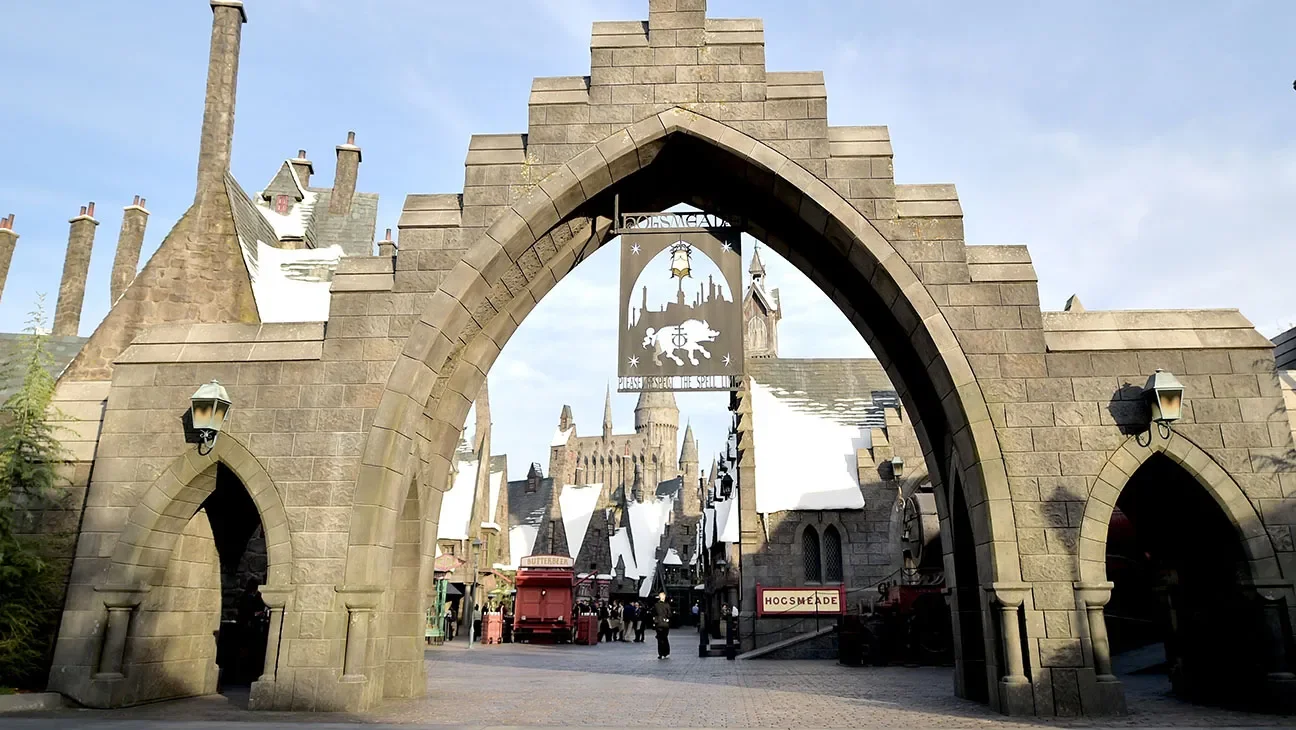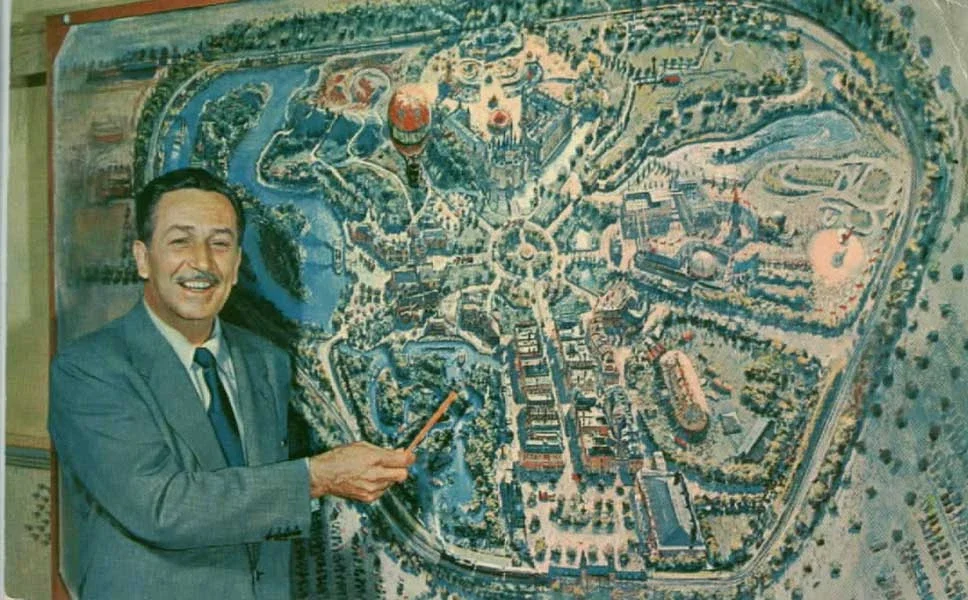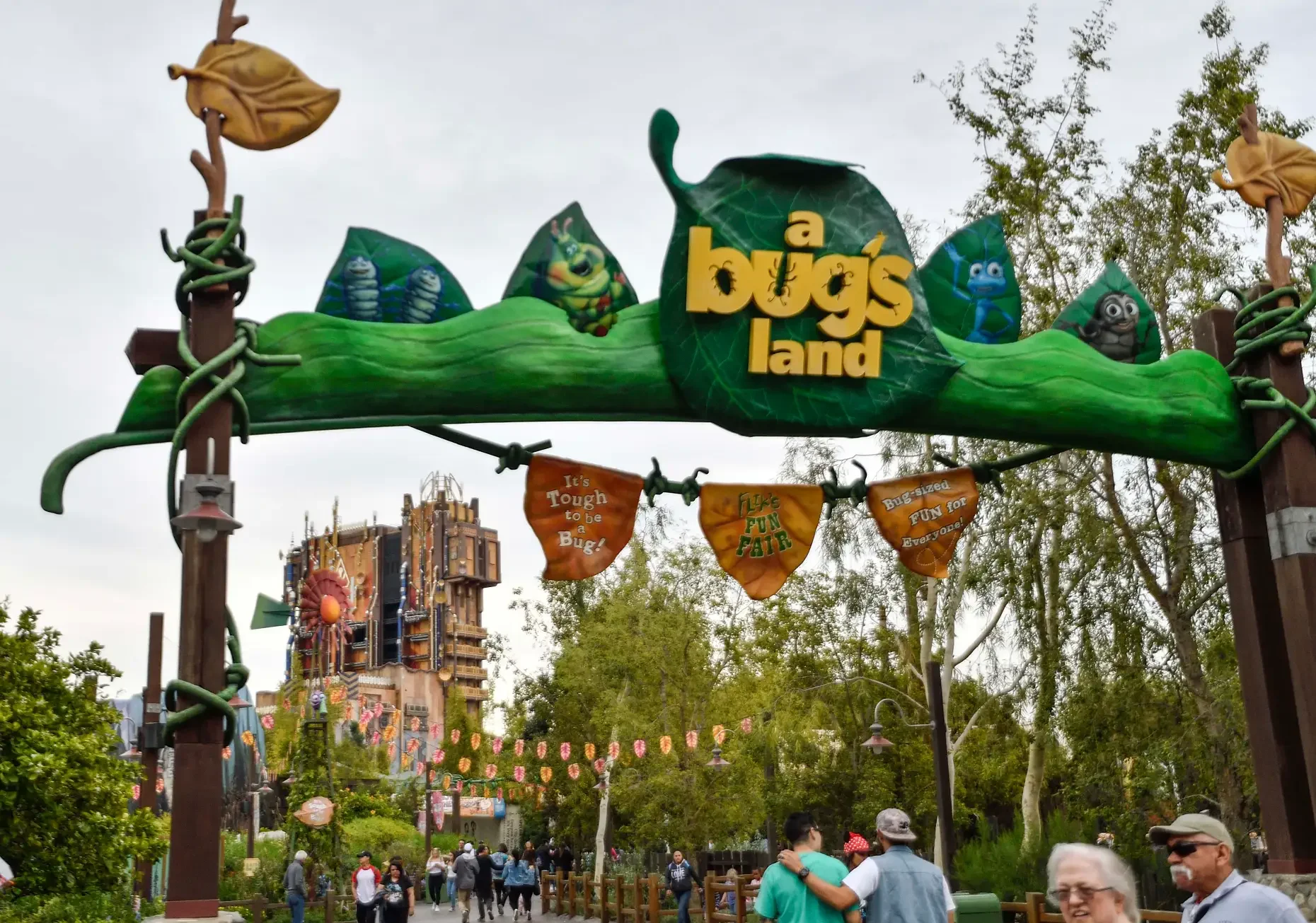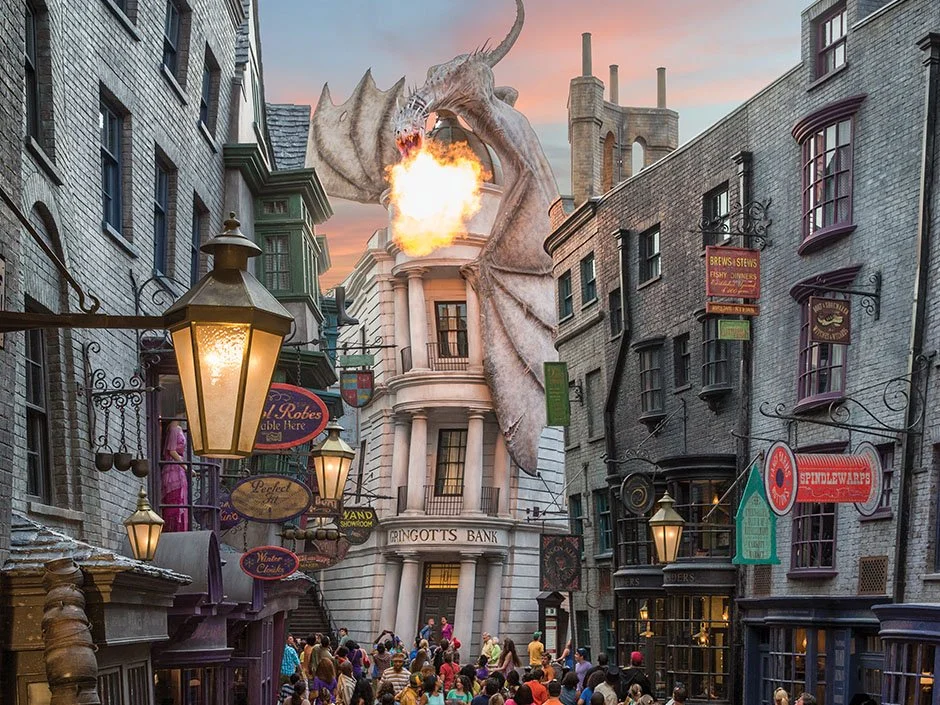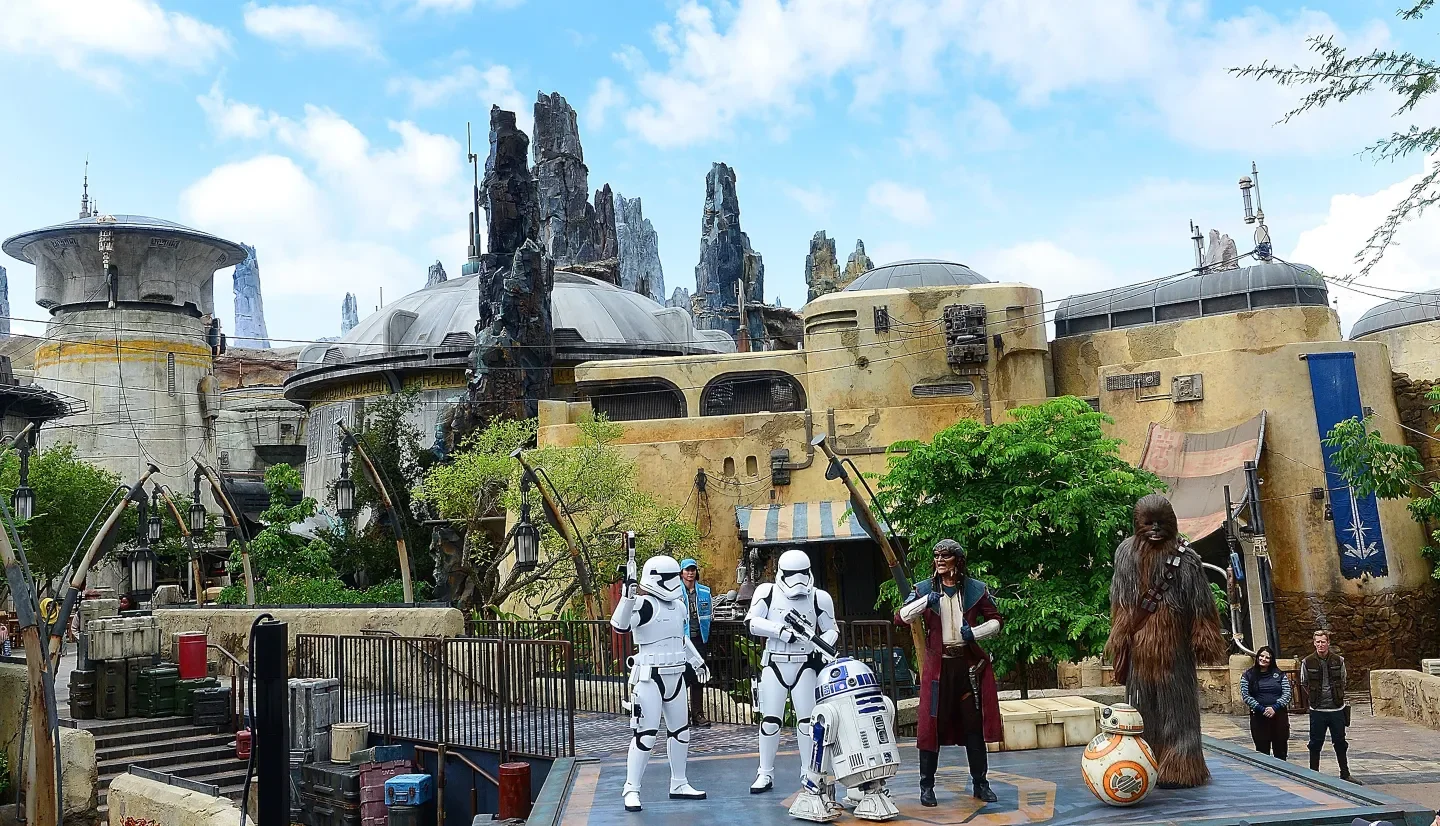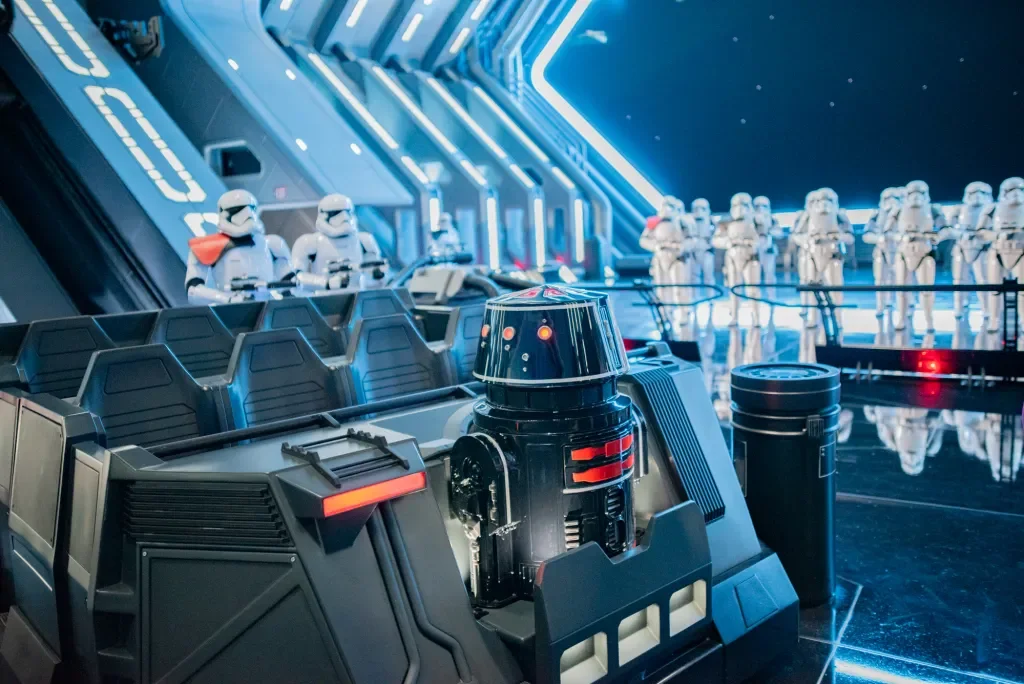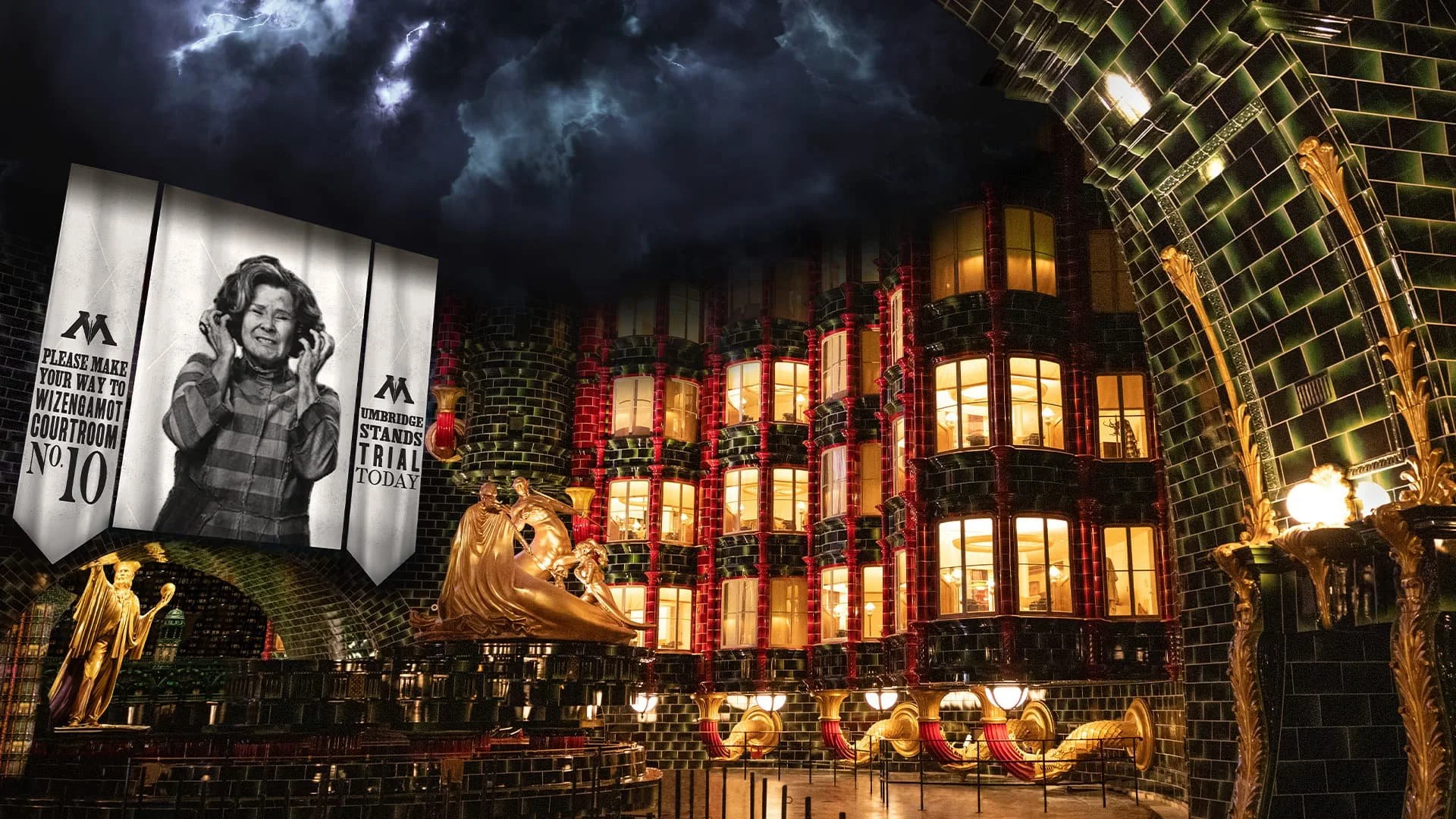Analyzing Single-IP Lands at Theme Parks
It’s no secret that when the Wizarding World of Harry Potter opened at Universal Orlando in 2010, it shook the theme park industry to its core.
The land that Universal built was, in many ways, the first of its kind, as never before had immersive theming been taken to that level of scale and detail. Everything from the architecture, the food, the merchandise, the interactive elements, and (of course) the attractions were all constructed to support the idea that you had stepped foot right into the world of the books and films. The questions of how the industry arrived at the Wizarding World and the consequences of its impact are crucial to understanding why some of these lands succeed while others fail.
When Disneyland opened its gates in 1955, it did so through the use of five themed lands: Main Street USA, Adventureland, Frontierland, Fantasyland, and Tomorrowland. These were broader genres of stories that provided a sense of cohesion between individual attractions, whether original concepts or based on an existing property.
This was how theme park design generally progressed until the opening of Islands of Adventure at Universal Orlando, with the park opening featuring lands based off of Jurassic Park, Dr. Seuss, and Marvel Comics. While impressive, these lands were far from the depth of theming that would eventually be realized through the Wizarding World’s Hogsmeade. Looking around, you could still see indicators that placed you in a theme park whether through merchandise, food and beverage, or general atmosphere.
Additional modest attempts like, of all properties, A Bug’s Land at Disney California Adventure failed to realize the full potential of the single-IP land until the Wizarding World in 2010, and there were several factors at play that led to Hogsmeade’s success. First, the pop culture landscape changed drastically through the progression of the internet and the rise of fandom culture. There are only a select few franchises that could actually warrant an entire dedicated land, with heavy hitters like Harry Potter, Star Wars, Marvel or DC, Lord of the Rings, and Nintendo as easy qualifiers.
Third, Harry Potter is uniquely suited as virtually the perfect property for theme park adaptation. The world of the books and movies is distinct and magical, but structurally very achievable. There is a wealth of universe-specific food and beverage that can be realized, and the various merchandise options for school robes, wands, pets, and more lend themselves perfectly to in-universe shopping that actually adds to a guest’s experience of immersion. This was even more fully realized with the expansion a few years later, adding Diagon Alley to the Universal Studios park.
Finally, and possibly most importantly, it was clear that in the development of the land, Universal had cut no corners; there was an apparent significant investment of artistic and financial effort. Any visitor could pick up on the fact that the land was built with quality, and the guest response was overwhelmingly positive, leading to a new era of growth for the Universal theme parks.
The next notable foray into a single-IP land would be Cars Land at Disney California Adventure. In a pivot by Disney from a land that was in development based on California car culture, Cars Land would open to rave reviews just like Hogsmeade. Once again, walking down Route 66 felt like the town of Radiator Springs had leapt right off the screen with amazing attention to detail, a fantastic anchor attraction, and a stunning night lighting package. However, the franchises of Cars and Harry Potter are very different in important ways, and Disney seemingly took the wrong lessons from the success of Cars Land while fundamentally misunderstanding why the Wizarding World worked so well.
Cars Land was a success because, also like Hogsmeade, it was a great theme park land first, regardless of the franchise associated with it. Even guests who had no particular affinity for or had never seen the Cars movies could still appreciate the outstanding theming and the incredible attraction in Radiator Springs Racers. As a merchandising juggernaut, it’s no surprise that toys and apparel in the land sold well with children, but the fandom size, love for the franchise’s universe, and desire to step into that world are dwarfed by Harry Potter as a property. However, Disney would seemingly take these misunderstandings and use them as the foundation for their next decade of theme park development.
This is where Disney announces their newest expansion to Animal Kingdom, Pandora the World of Avatar, to the collective confusion of the world. Avatar was likely chosen for its spectacular box office numbers, but once again, this decision betrays a fundamental misunderstanding of the wider cultural landscape. Avatar’s success was driven mostly by its technological achievements, employing innovative 3D and groundbreaking, stunning computer-generated visuals which led to it becoming a cultural event. However, once many had experienced it, the event was largely over. The characters, story, and specifics of the film’s universe were secondary compared to the visuals and were largely forgotten, unlike a property like Harry Potter which maintains a robust fandom due to those same factors over 20 years later.
All of this said, a theme park land based on Pandora should never have worked. However, mostly due to the efforts and direction by Imagineer Joe Rohde, Pandora is largely an artistic success. Like Cars Land, Pandora is a well-executed theme park land first, independent of the property it is based on. An important difference from the previous examples is that, by my best assumption, I would not expect the merchandise sales from Pandora to be nearly as lucrative as Hogsmeade or Cars Land due to the factors previously listed, and the only one suffering from that is Disney.
Heading into the mid-2010s, the clearest option for Disney to answer Universal’s Wizarding World seemed obvious. They needed a property with an enormous fanbase, landmark box office numbers, a gargantuan history of merchandise sales, distinct environments audiences wanted to visit, beloved characters, and rich worldbuilding. It was time for guests to step into a galaxy far, far away.
Star Wars Galaxy’s Edge opened after years of development, and the result was… fine? Not to say that the sets aren’t artistic achievements with the full-scale Millennium Falcon being a highlight, but it failed to be as evocative of an environment as Hogsmeade, Diagon Alley, or Radiator Springs. Anything less than spectacular is an absolutely bizarre takeaway from a Star Wars land of all projects, and there are several key missteps which combined to create such an outcome.
First, Disney gambled their 1 billion dollar theme park land (which was actually $2 billion as it was replicated on both coasts) on the success of their still-in-progress sequel trilogy, thus putting all of their eggs into the basket of one of the most contentious products of popular culture in recent memory. Even more confusingly, they opted to not build a familiar environment as originally planned, but to construct a new planet completely unknown to the guests. Their justification was to allow for more creative freedom, ignoring that a large appeal of theme park adaptation is to be immersed in beloved and familiar environments that would be otherwise impossible to experience.
In fact, in an interview with the WDW Radio Podcast, former Vice President of Walt Disney World Dan Cockerell confirmed that the original plans for the Star Wars land were set on Tatooine. This would have included a Jedi Training Academy experience, a Jabba’s palace dinner show, and a speeder bike attraction set during the events of Episode VI. However, after conversations with Disney CEO Bob Iger and President of Lucasfilm Kathleen Kennedy, both executives mandated a change in direction to focus on the upcoming sequel trilogy.
Next, Disney’s stringent and absolute adherence to setting the land in a specific date of the Star Wars canon meant that certain characters would never appear for guests to interact with. No Darth Vader, no Luke Skywalker, no Han Solo or Princess Leia or Yoda. Instead, kids can catch a glimpse of smuggler Hondo Ohnaka.
The merchandise fared a little better with in-universe Jedi robes and other apparel, buildable droids, and lightsabers, though even the sabers were not without their drawbacks. Especially in comparison to Wizarding World’s wands, lightsabers are far less affordable, are surpassed in quality by less expensive third party companies, are significantly more cumbersome to carry around, and provide no interactive element with the land. In fact, while groundbreaking systems of character and land interaction were announced at a D23 Parks Panel, the only interactive element to actually be realized mostly consists of scanning boxes with your phone.
Though the food options are solid, Disney’s chance to compete with the runaway success of Butterbeer completely fell apart. Though taste is obviously subjective, since its release, Butterbeer has been met with near universal acclaim. In contrast, the appeal of Galaxy’s Edge’s blue and green milks are far more debated. For over $9 each as of 2025, guests would need to crave this drink to justify the premium cost like Butterbeer does.
While Rise of the Resistance is undoubtedly another standout anchor attraction, the lack of adequate supplementary experiences subjects it to ridiculously inflated wait times. Millennium Falcon: Smugglers Run is a somewhat lacking video game-esque screen experience, and both a Star Wars creature menagerie walk-through attraction and a ride where guests would take a scenic tour around the land on the back of a Bantha were cut from the final product. The result of all of these factors is a top-heavy land with one great attraction and an unfamiliar, vaguely Star Wars-themed shopping mall.
California Adventure’s Avengers Campus, which opened in 2021, fared possibly even worse. Marvel is another tentpole property for the Disney company, yet again was somehow not given the investment it justified as the highest grossing film franchise of all time. The land opened with character interactions, some shopping and dining, and only the land’s supplementary ride opening as Web Slingers without its anchoring attraction.
Now looking to something like Universal’s Epic Universe, this park is a clear example of this modern era of theme park design. Epic consists of four single-IP lands guests can access via portals to the central hub world of Celestial Park. While some areas are more developed than others so close to its opening, they all still feel well-rounded with supplementary attractions, dining locations, and other points of interest with expansion plots set aside for future construction. Fittingly, one of the lands featured is the newest installment for the Wizarding World, the property that kicked off this trend of single-IP lands.
While intellectual property can be important for bringing in guests and providing a level of cultural relevance to a theme park, it must be implemented carefully and intentionally. The overall quality of the land, regardless of the franchise it is based on, will always be the most important factor for guest enjoyment. When used as a crutch to fall back on while cutting financial corners, a poorly executed IP-based land cheapens both the overall park and the property it is built on.
Sure, if you advertise a new development based on a popular property then you might have an influx of guests show up, but audiences can tell when they’re being cheated. If the final product feels cheap then they’re unlikely to return, unlikely to recommend a visit to their friends and family, and unlikely to establish a legacy of goodwill that has allowed theme park giants to secure their current foothold in the American cultural identity.
Drawing in a one-time visitor is easy. Building a consumer relationship of trust and quality is not only financially beneficial, but inherently meaningful. As seen through the Wizarding World, that process is just as complicated and just as simple as waving a magic wand.
